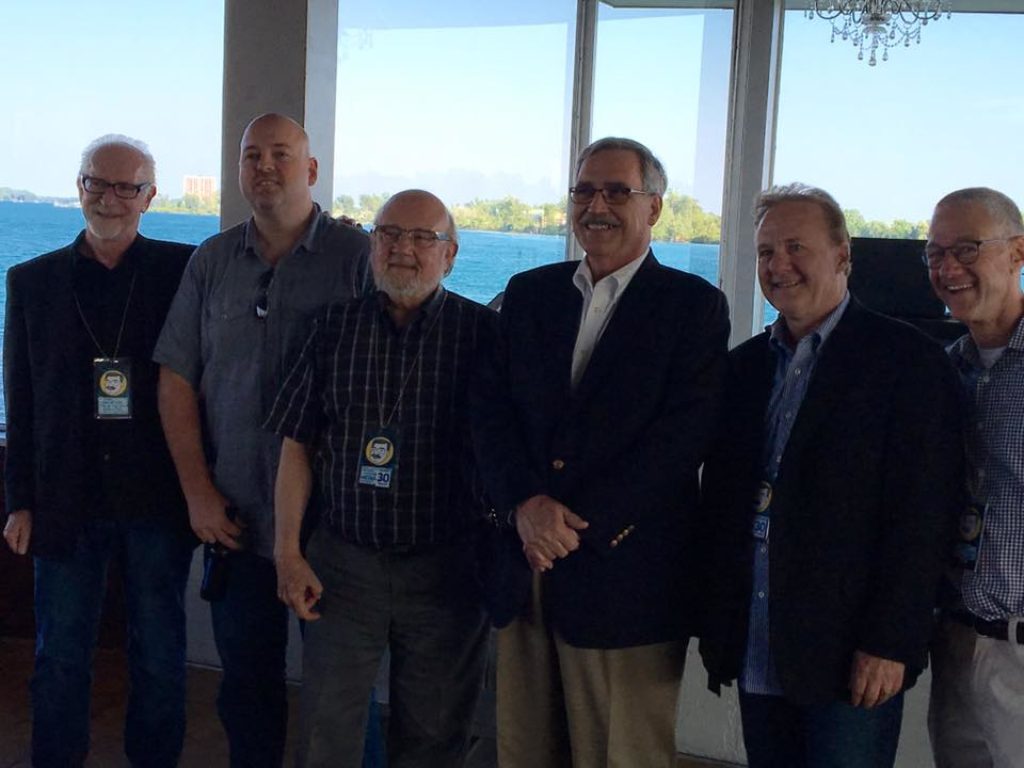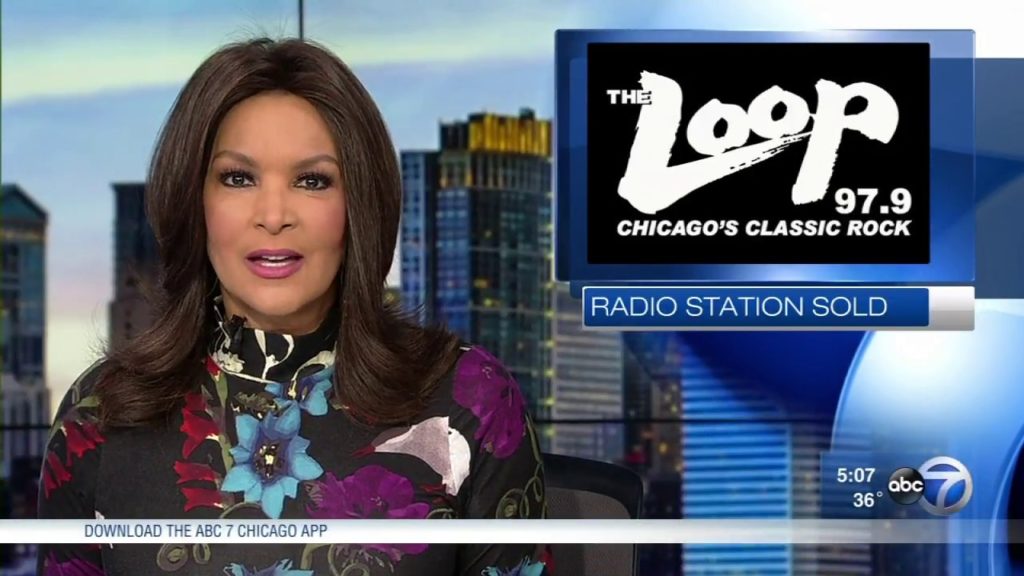
My wife and I were having dinner at a restaurant recently in downtown Birmingham (a suburb of Detroit) – Phoenicia. It dawned on us this wonderful Middle Eastern-flavored eatery had been around at this same location for more than 35 years.
And as she pointed out, it’s an accomplishment to have stayed consistent while maintaining great quality in a highly competitive business where dining establishments routinely come and go.
Why has Phoenicia endured? They’ve stayed in the same location, are true to their mission, and their owner is a fixture in the community, regularly seen at the local farmer’s market, selecting food to be served later that evening.
Birmingham is a trendy area. Sometimes, a hot new place opens up, everyone stands in line to get in (they don’t take reservations, of course), the reviews are amazing, and a year or two later, they’re toast.
If this sounds a little something like the radio business, then we’re on the same page. And the idea of venerable radio brands flew into my email box yesterday, thanks to Sean Ross who was inspired by both Radio Rewinder and his boss, Larry Rosin.
Sean’s column – “The Land of Heritage Brands” – was spurred by Radio Rewinder republishing a top ten market ratings summary Radio & Records published way back in1984.
And the “investigation” that followed involved identifying how many radio stations have been around for all those 35 years. And while Sean is an easier grader than me, it turns out it’s a relatively long list of radio station brands that have not only survived, but in most cases, thrived.
For example, Sean overlooked call letter and brand changes – WBEB in Philly was one of his examples – including rebranding efforts that eventually took it from B101 to More FM and back again.
He gave my old nemesis, WLLZ (Wheels), a pass. But they actually disappeared for a long time – more than 20 years – before their resurrection in 2019 – on a different frequency.
 Sorry, Sean, but continuous service matters when we’re looking at brands built to survive lousy ratings, ownership changes, and the other travails that just happen when you’ve been around a long time.
Sorry, Sean, but continuous service matters when we’re looking at brands built to survive lousy ratings, ownership changes, and the other travails that just happen when you’ve been around a long time.
Sean’s list contains many stalwarts that have been in some version of their original formats with the same call letters. In some cases, WRIF, KLOS, and a handful of others come to mind – with the same logos.
How does this happen? Surely, when these radio stations launched – in some cases, more than a half century ago – their founders couldn’t have imagined they’d last for years, much less decades.
What are the attributes that gave them staying power, and what has kept them consistently good, through waves of consolidation and the other turbulence that has rocked the radio business to this day?
I would suggest that amazing programmers (and the managers and in some cases, dedicated ownership that supports them) ought to get the bulk of the credit. They’re the vision people who, in spite, music fads, personalities coming and going, not to mention regular attacks by other stations, stewarded their stations through numerous obstacles, setbacks, and in some cases, would-be disasters.
I was lucky enough to program one of these – WRIF, in my hometown of Detroit. And I’ve been blessed by having the honor to have worked for several other stations on Sean’s special list – as well as many others in the top 25 markets – that meet all the criteria.
My mentor at WRIF, Tom Bender (who also programmed and then managed the station for years) taught me early on that while there may eventually be several owners (he was right, of course), we were all foot soldiers for the call letters, what they stood for, and how they served their market.

The “6-pack” of WRIF PDs pictured at right are all programmers from different walks of life and backgrounds, all of whom sat behind the same desk, solving the same problems, and mapping out an uncertain future.
And most of the hundreds of people who have worked at WRIF since I first was hired in the 1970s – especially on the product side – implicitly understood the importance of their mission. It was never just about rating books and sales spreadsheets.
It was bigger than that.
You talk to employees today at WTOP, WMMR, KOIT, WROR, KQRS, KISW, KSHE, KSL, and KROQ and they’ll tell you the same thing: They don’t see themselves working for just a radio station. They’re part of an institution, a special place that’s part of their market’s rich radio history.
And whether – like me – they grew up in the markets where these built-to-last stations are licensed, or they moved in from somewhere else, they can feel the importance of their radio stations, well beyond their ranking this month in Nielsen or Miller Kaplan.
Maybe that’s because they hear it from listeners every day of the week. The audience can be like a pack of elephants – remembering everything (OK, their “facts” are often scrambled) – and holding onto memories of the station and the time they met the afternoon jock at that KISS concert back in 1979.
Even if these amazing stations have their lapses – often fueled by new ownership that doesn’t get it, a lack of research and marketing resources, personalities who leave for greener pastures – they find a way to course-correct and regain their balance. But not every station has been so fortunate.
 Think about how many stations that should have been on Sean’s list didn’t make it. The Loop, WBCN, KMET, W4, KZEW, KFOG – it’s a long list – at one time, all appeared to have what it took to stay alive, but somehow lost their way amidst the tumult and the competition.
Think about how many stations that should have been on Sean’s list didn’t make it. The Loop, WBCN, KMET, W4, KZEW, KFOG – it’s a long list – at one time, all appeared to have what it took to stay alive, but somehow lost their way amidst the tumult and the competition.
Sean poses an interesting question about this elite group of radio stations that made it into his “35+ Club”:
Have they lasted so long because of stagnation or stability?
And he concludes – correctly, I believe – that “they’re a reminder of radio’s endurance and connection with the audience.”
Radio listening is frequently driven by habit – especially among those old enough to have started listening to these remarkable stations around their conception.
I recall conducting a Listener Advisory Group for WRIF several years ago among 25-34 year-old men. And when I asked why they were sitting in the station conference room, eating pizza, and taking selfies around the hallways and studios of the station, one of the guys looked me in the eye and said,
“WRIF’s been around my entire life. I’ve never known a time when the station wasn’t rocking Detroit.”
That.
Yet, in some cases, these seemingly bulletproof radio stations are often undervalued and undersold in their markets. Most are highly successful in today’s frenetic environment – whether measured by diaries or meters. But too often, buyers and sellers simply don’t give them the respect they’re due.
Their ongoing, steady listenership isn’t just a product of what new songs or news stories they’re featuring today. In almost all cases, it’s been about consistency, creativity, risk-taking, and adherence to their brand’s value.
Those attributes should be worth a premium because these brands are least likely to be voicetracked or automated. Their talent tends to be locally sourced. And that’s why their audience has a lifetime engagement with them, unlike the others that take up space on the radio dial.
Sean laments the dearth of exciting new radio brands that have sprung up in this new millennium. And perhaps he’s right.
But we may be surprised to see who’s still standing when Radio Rewinder publishes an updated list of stations in top 10 markets in 2035.
I hope to blog about that group, too.
- What To Do If Your Radio Station Goes Through A Midlife Crisis - April 25, 2025
- A 2020 Lesson?It Could All Be Gone In A Flash - April 24, 2025
- How AI Can Give Radio Personalities More…PERSONALITY - April 23, 2025




Leave a Reply